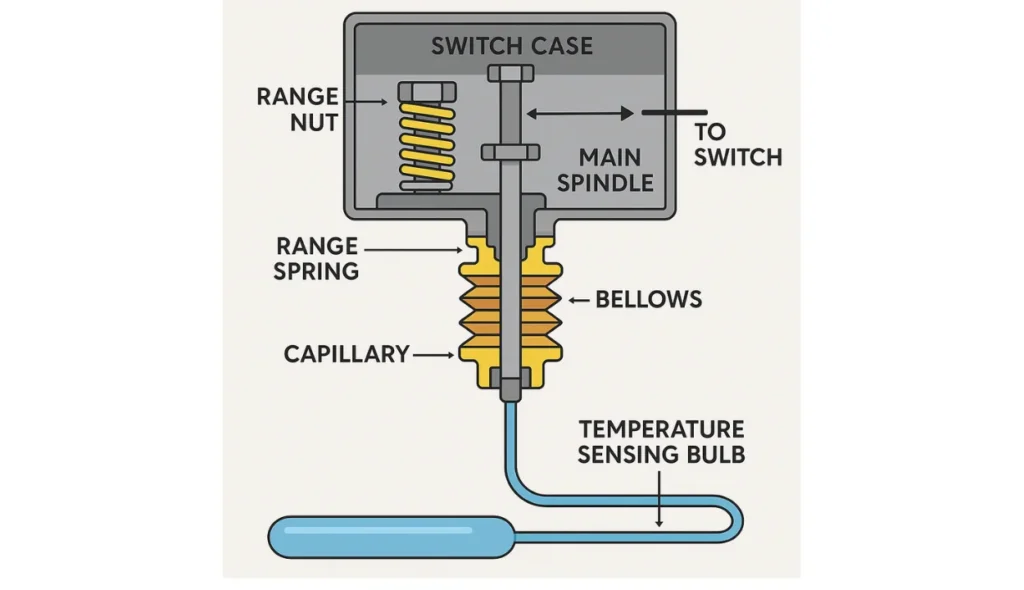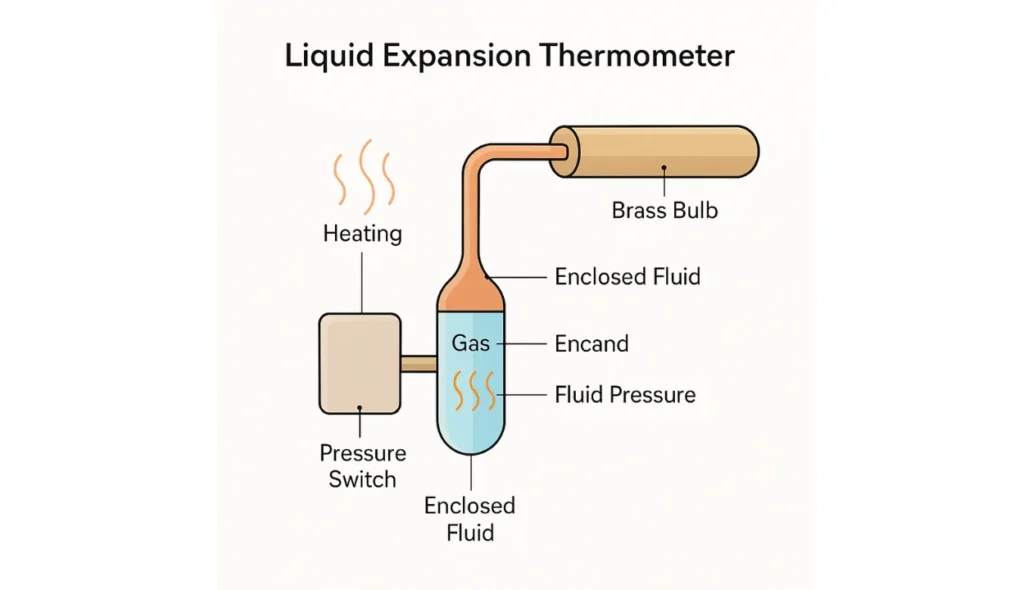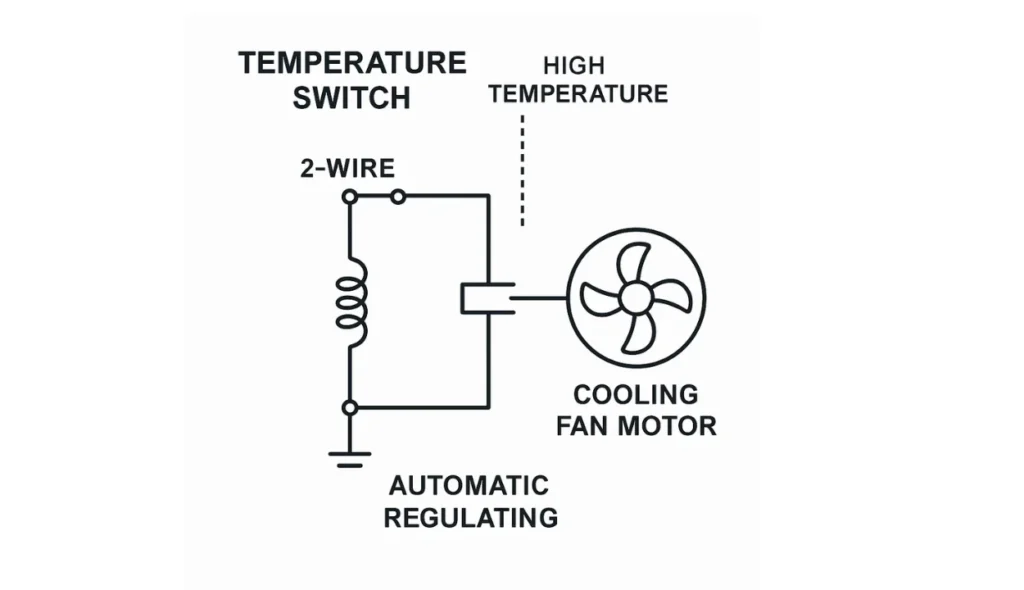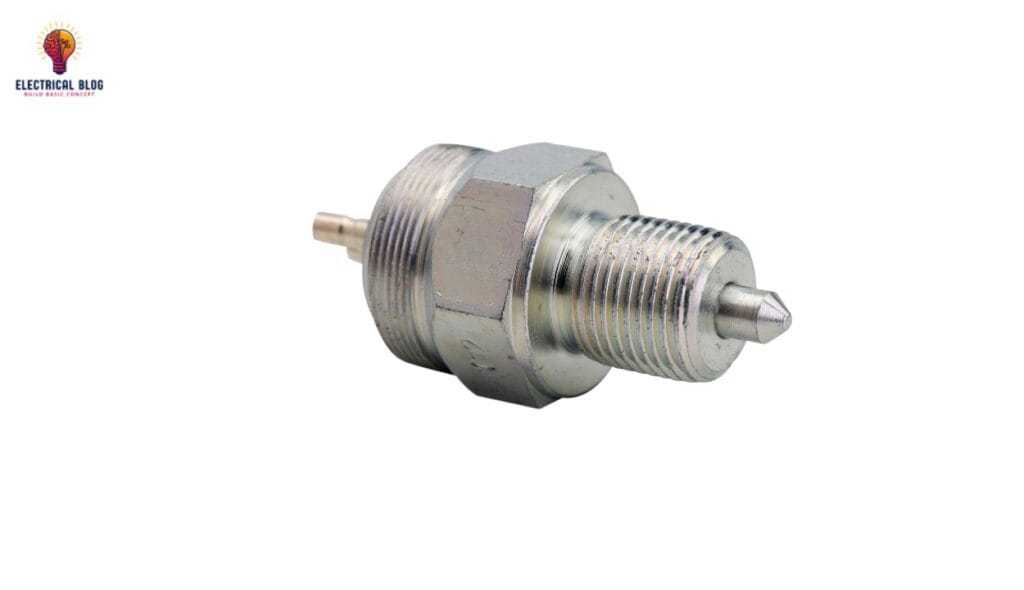Introduction
In my time working with electrical and electronic systems, I’ve come across many switches, but the temperature switch stands out as significant. It’s used across industries to ensure the control operation of machinery, especially where temperature changes must be closely monitored. Whether it’s a toggle, slide, push, or rotary button, each switch plays a role, but none more so than the temperature switch in the industrial sector.
What makes the temperature switch unique is how it supports controlling temperature for different purposes. From maintaining the level of liquid in tanks to adjusting pressure in boilers, its applications are countless. I remember writing an article once about its workings and how it fits into a control system, and it was one of the most insightful pieces I’ve done on system elements and device safety.
What is a temperature switch?
In the context of manufacturing operations, a temperature switch is a mechanical device that is utilized for the purpose of monitoring and controlling temperature. It works by turning ON or OFF switch contacts when the temperature hits a fixed range. This function offers protection to equipment and machinery from overheating and failure.
These switches are especially helpful in space-constrained, moveable applications, as they’re small, cost-effective, and easy to install. I’ve seen them shown in schematics with a specific symbol, and their switching condition changes based on input values. They’re responsible for monitoring and can measure heat effectively in critical industrial settings. You can also read Double Pole Double Throw Switch.

Temperature Switch Construction
Inside a temperature switch, different components like the switch case, range nut, capillary, and temperature-sensing bulb are assembled in a compact construction. The bellows are subjected to increased pressure as a result of the escalating temperature of the fluid contained within the bulb. This pressure compresses the spring and moves the spindle toward the switch.
This movement triggers an ON or OFF action, depending on the set point that is already defined. The system reaches equilibrium when the force of the spring and bellows balance. The full diagram of this process is shown, and each variation in temperature makes the system respond with precision through the main spindle and range spring. You can also read Double Pole Single Throw Switch.

Working Principle of a Temperature Switch
In my field experience, I’ve seen how a temperature switch starts its function once variations in temperature occur inside an enclosed space. A sensing probe constantly monitors for changes, and when it detects an increase, it may open an electric contact. This precise mechanism helps activate or trigger the switch, depending on how the setup is calibrated.
Similarly, when there is a decrease in heat, the temperature switch detects it and ensures the electrical contacts are closed. Whenever temperature management is of the utmost importance, this switching action is utilized extensively. I’ve observed this working efficiently in many systems where events taking place need close monitoring and reliable responses. You can also read Step Recovery Diode.
Technical Specifications You Should Know
From my hands-on work with control systems, I can say a temperature switch typically supports a voltage supply ranging from 12 to 30 VDC, making it compatible with most standard setups.
Its accuracy options include ±0.1% FS, ±0.3% FS, and ±0.5% FS, ensuring precise triggering even under varying load conditions.
Pressure handling is robust, with a min limit of 40 bar and a max capability reaching up to 300 bar of resistance.
One feature I value most is the long-term stability, which is maintained within ±0.1% FS over 1 year of operation.
The response time is fast—at T=90°C, it acts in just 5.4 s, while at T=50°C, it’s even quicker at 2.3 s, proving reliable under rapid thermal time shifts.
Temperature Switch Types
Mechanical Temperature Switches
Mechanical temperature switches are reliable in detecting subtle changes in temperature using bimetallic strips or liquid expansion. These types are widely used in industrial settings for measuring heat levels and acting as automatic switches.
They’re available in two forms—bimetallic and liquid—both responding naturally to temperature shifts without needing external power.
Bimetallic Temperature Switch
A bimetallic temperature switch works by using a bimetallic strip that bends with heating due to the expansion of metal. This bending causes mechanical displacement, which activates the temperature switch. The key principle lies in how each metal has a different temperature coefficient, so their physical dimensions shift differently under the same heat. That’s why similar metals won’t react the same way to temperature changes.
Its compact size and low cost are major advantages, though accuracy can be affected by vibrations, shocks, or sudden ambient temperature shifts. From what I’ve seen, they struggle with handling high temperatures and face disadvantages in rough settings. As the volume of the metal changes, so does its shape—this includes contraction when cooling. The performance varies with every detail, including the metal’s physical dimensions, making them useful in basic applications where less precision is acceptable.
Liquid Expansion Thermometer
A liquid-filled temperature switch, the brass bulb filled with chemical fluid or gas, reacts to temperature changes quickly. As the thermometer bulb gets heated, the enclosed fluid starts to expand, causing a rise in fluid pressure. The activation of the pressure switch that is connected to the fluid-filled bulb system is triggered by this pressure.
The advantages include lower cost, compact size, and being more accurate in stable environments. However, I’ve noticed leakage, long response times, and poor resistance capability to shock as key disadvantages. Despite this, its sensitivity to heat is reliable, though not ideal for high pressure or extreme use.

Electronic Temperature Switches
They offer high accuracy when used with the right measuring element. Their electronic circuit responds instantly to any change in temperature, delivering a switching signal in the correct proportion. A steady power supply source is necessary for their function, and their use is applicable in systems where exact temperature control is critical. Each temperature switch is calibrated to perform efficiently in its specific environment.
Temperature Switch Circuit Diagram
Temperature switches control a cooling fan in heat-sensitive equipment. The circuit is smartly designed to work automatically, kicking in when the temperature hits a limit. A 2-wire diagram shows how the switch works to start the motor when things get hot.
When the high temperature hits, the switch shuts, and the coil gets activated, closing the contacts and activating the fan. This automatic regulating system is simple yet powerful for controlling heat flow. Every diagram I’ve built follows the same logic, keeping things reliable and safe.

Temperature Switch Vs Thermostat
Both temperature devices—thermal switch and thermostat—serve unique roles, though they may seem similar. Here’s a quick comparison that blends hands-on insight with technical facts:
| Feature | Temperature Switch | Thermostat |
|---|---|---|
| Device Type | A bi-stable, electromechanical switch | A closed-loop control device |
| Function | Built to measure temperature and respond quickly | Designed to regulate and maintain set temperature |
| Design Elements | Uses snap-action contacts and a sensing part | Has housing, flange, frame, and wax element |
| Types Available | Comes in mechanical and electronic forms | Offers programmable, non-programmable, and smart options |
| Also Known As | Often called a thermal switch | Sometimes referred to as a thermometer or indicator |
Temperature Switch HS Code
Every Temperature switch must carry an HSN Code to cross international borders smoothly. This Harmonized System helps customs categorize each product using 6 digits to calculate taxes, duties, and apply restrictions. Missing the HS code or commercial invoice can result in a delayed shipment. Whether it’s a Programmable, Intelligent, or Electronic Temperature Switch, using the right code ensures hassle-free import.
| HS Code | Product | Source | Destination | Notes |
|---|---|---|---|---|
| 90328990 | TS-SNA, SNK-PT100, 1920000266 | Germany | India | Industrial sensor with high precision |
| 90328990 | Thermophant, TTR31, A1C12WAE1XYB | Germany | India | Smart transmitter for factory automation |
| 90328990 | ETS, Electronic Temperature Switch | Germany | India | Listed under P.O.1023282298, used in HVAC |
| 90328990 | opener, 150 C, Temperature switch | Germany | India | Heat-resistant application switch |
| 90321090 | TLS, Temperature Limit Switch, 200 C | Germany | India | For Injection Moulding Machinery Parts |
Applications of Temperature Switches
Temperature switches are designed for a variety of applications across different industries to ensure that equipment operates within safe temperature ranges. These switches are vital for controlling systems that require accurate thermal management. Let’s explore how they are used:
In kitchens and restaurants, temperature switches are crucial for maintaining food temperature in air heaters and burners, ensuring that foodstuffs are cooked safely and efficiently.
In automotive engineering, temperature switches help regulate pumps and motor drives, ensuring that the components don’t overheat during operation.
Heating systems in boilers and circulation pumps rely on these switches to prevent overheating, which could damage equipment or affect processing.
The pharmaceuticals industry uses thermal switches to maintain the precise conditions needed for the processing of sensitive substances, ensuring safe and effective outcomes.
In high-performance systems, such as RF power amplifiers and power supplies, temperature switches help protect sensitive components from heat damage, maintaining the longevity and reliability of the system.
Burners, air heaters, and boilers benefit from temperature switches to regulate food temperature and ensure safe operations in industries that require strict thermal control.
Conclusion
Temperature switches are an essential part of many systems across various industries, ensuring that equipment operates within safe temperature ranges. Their uses range from food safety in kitchens to advanced systems in automotive, pharmaceutical, and power industries. These switches keep machinery safe. They stop overheating and help everything run smoothly. Temperature switches, whether mechanical or electronic, are essential. Their precision and reliability help manage heat. This boosts safety and extends the life of important equipment.


